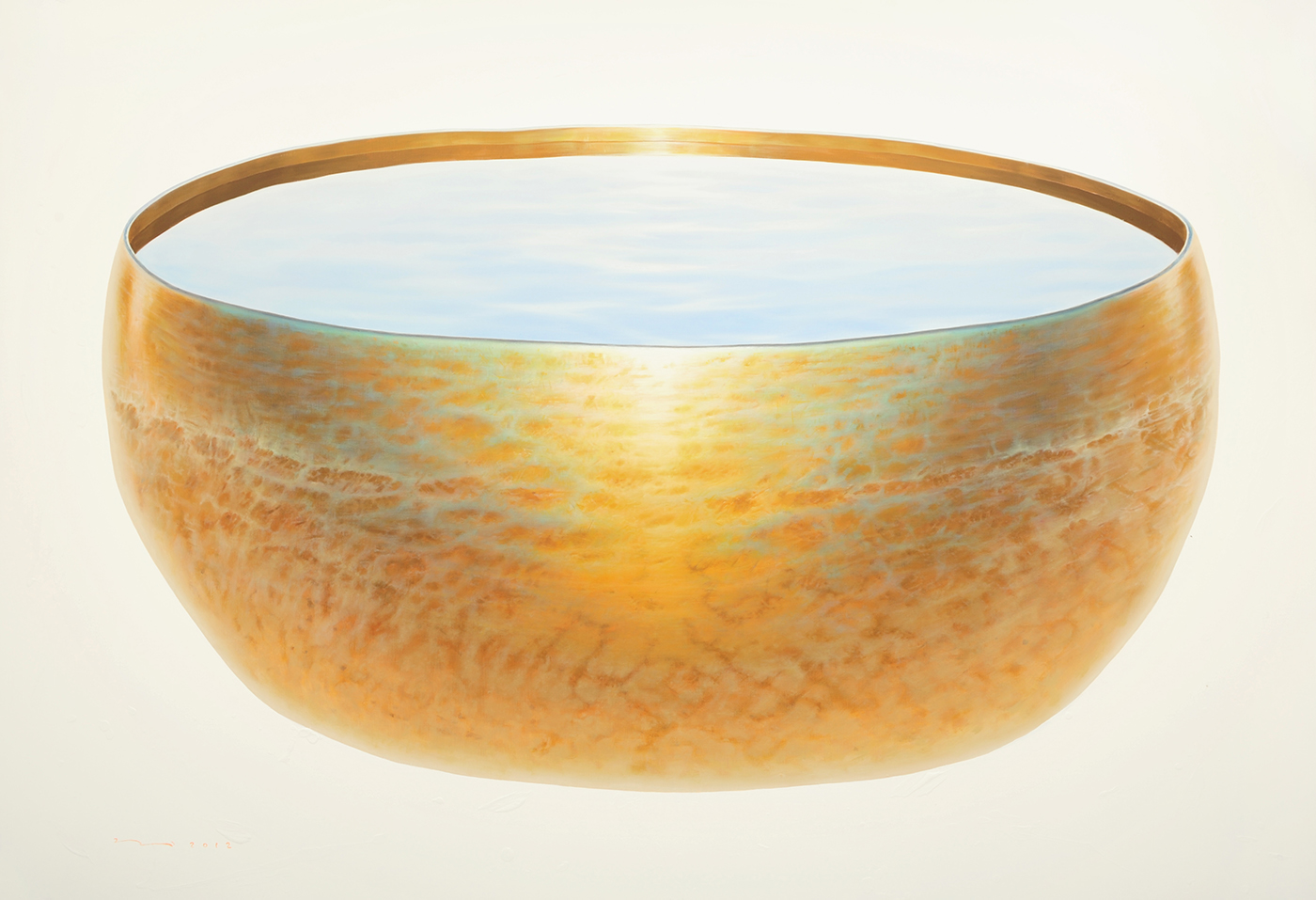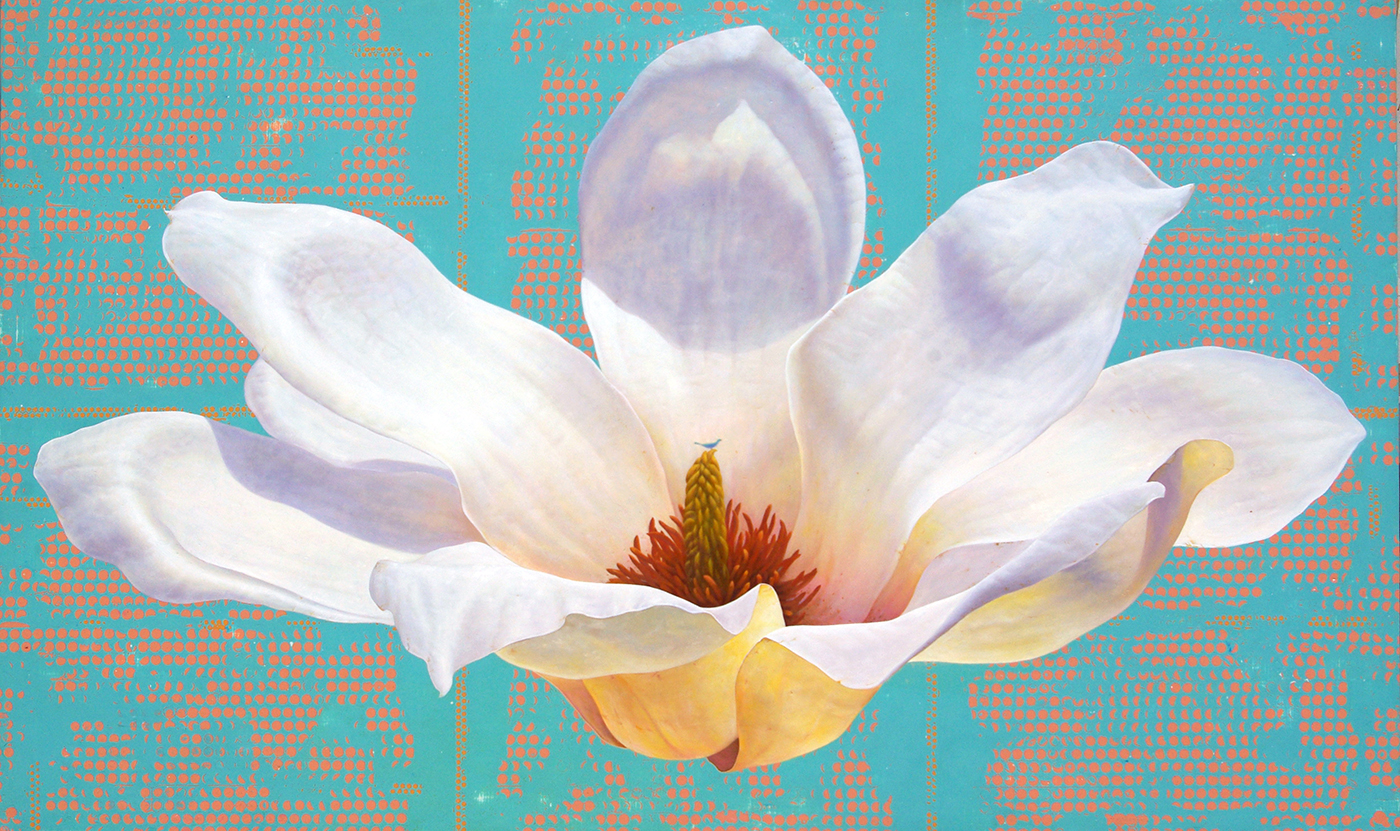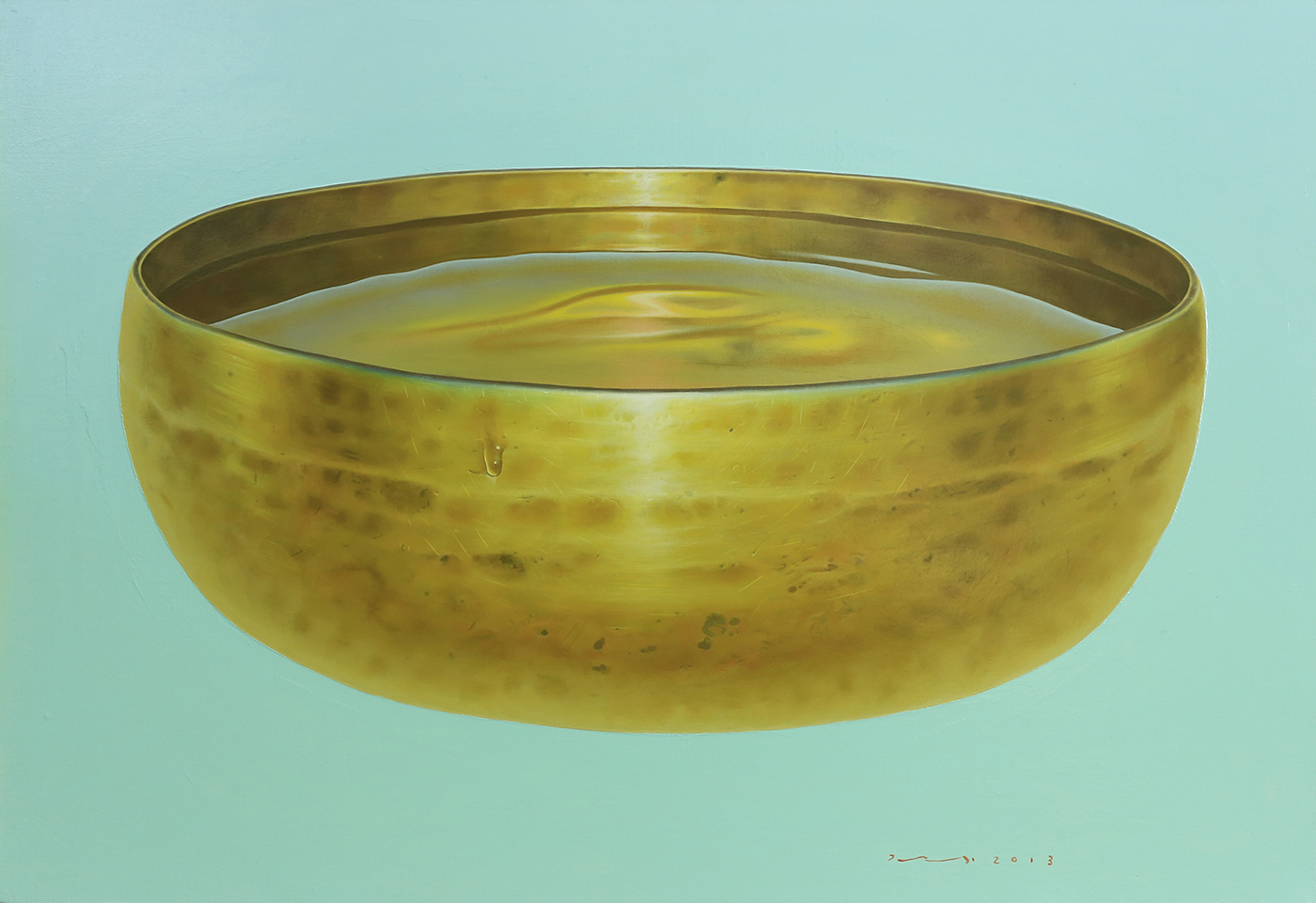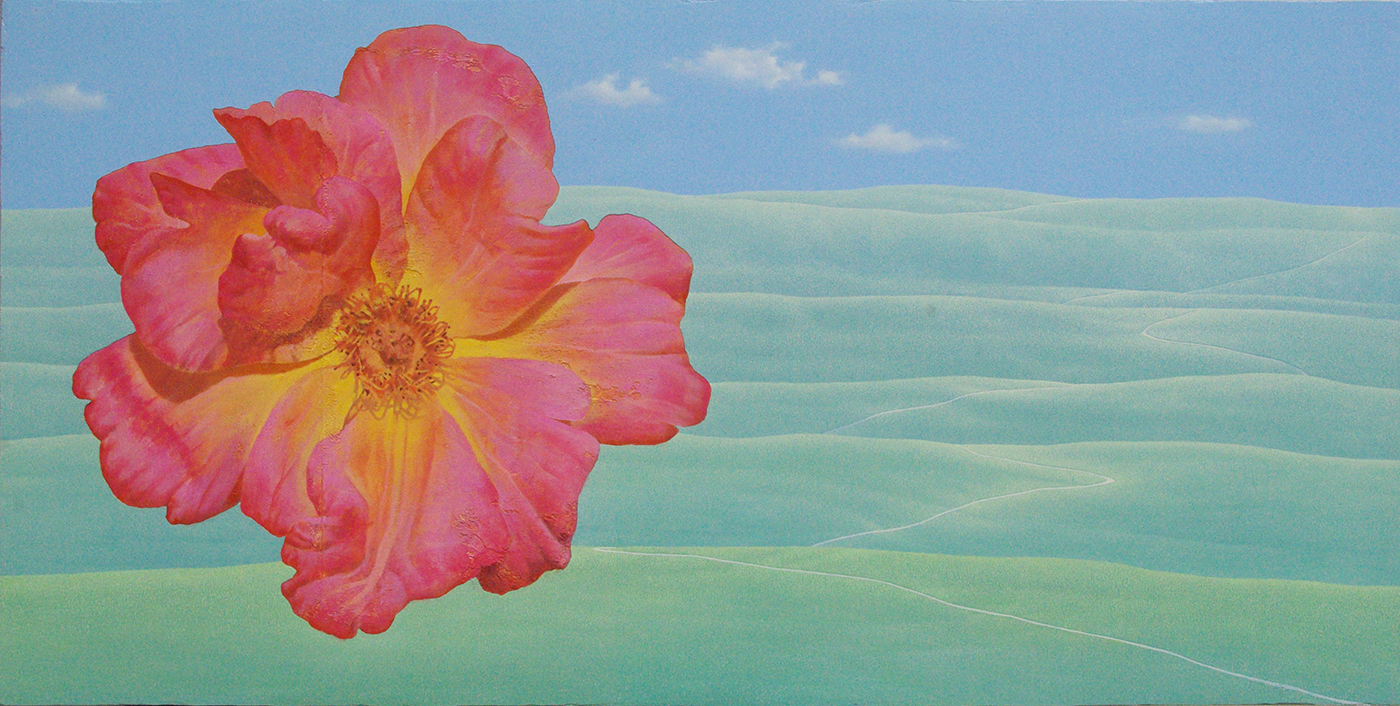Between things and their images
Kim Young-ho (Art critic/Professor at Chung-Ang University)
Kim Soon-kyum is an artist belonging to the tendency of object-representational realism, and has been studying the relationship between objects and images for over ten years. The subjects he has chosen so far range from flowers to vessels, antique furniture, and lamps, and are not limited to a specific category but are diverse in scope. The reason he does not place any particular restrictions on the selection of subjects is probably because the real goal of his art is not the objects themselves, but rather the stories they create. For example, flowers or vessels drawn by the artist using detailed techniques have been placed on the canvas together with objects such as antique furniture or lamps, providing a unique illusion to those who look at them. The objects he chose created various meanings, either conflicting or harmonious, like actors performing on stage. In this process, objects became symbols that reminded people of the past or brought back memories, and the artist gave the title “Longing Beyond Memory” to the landscape with these narratives.

Kim Soon-kyum’s ‘Brass Bowl’ series presented in this solo exhibition shows a different change from before. Above all, it is noteworthy that the author's intention to explore the relationship between objects and images has become clearer. Looking at his previous works, the flowers and vessels painted on the screen were treated as tools to convey a series of lyrical messages. The exaggerated expressions of magnolia blossoms in full bloom on branches hanging over the water or water overflowing from a brass vessel contributed to creating a kind of emotional message. This lyricism is not much different from the lyricism felt in a flower arrangement or a bowl containing pure water. However, in recent series, we see that these lyrical messages are greatly reduced, and a shift is made toward maximizing the physical properties and forms of objects themselves, as well as the images and illusionary effects derived from them. This change is a kind of experiential achievement that has been achieved through a long period of time and effort, and may be proof that his work is rising from the aesthetic stage to the epistemological stage.
Meanwhile, Kim Soon-kyum's recent works also show changes in the way he reproduces everyday objects in pictures. This is a shift from a descriptive description to an interpretive expression. This change is causing different emotions to be felt by each audience. Because the former appeals to sensory explanations, while the latter approaches the problem of perception surrounding visual perception. The author boldly removes from the screen the theatrical devices that create stories in order to reinforce the illusionary images of the objects themselves. That is why, in his recent works, we cannot find the still life-style arrangement of magnolias in a vase, antique furniture, or doors. The world represented by the writer is no longer a space of life. Instead, one object is arranged to cover the entire surface of the canvas, and attention is paid to capturing the physical properties of the material that reveal the presence of the object and the effect of light reflected on its surface.
Now, what has taken its place on Kim Soon-gyeom's canvas is a huge brass bowl. Like René Magritte's pipe painting, Kim Soon-gyeom's object drawn on canvas takes the form of a brass bowl, but it exists as an illusionary image with a certain inherent rhythm, free from the function surrounding the brass bowl and the role of a tool to convey a message of life. Here, we encounter the aesthetics of image and illusion.

Kim Soon-kyum's recent works of brass bowl invite viewers to confront the relationship between objects and images. It requires recognizing the difference that occurs between the so-called thing itself and the illusion of the thing, and obtaining and enjoying aesthetic inspiration from it. To this end, the author introduces several visual devices as follows: First, a single brass bowl is drawn on the entire canvas in a huge size, and the texture of the surface is described in detail to enhance the physical properties of the brass bowl. The image of water is contained as a soft organic substance within the hard brass bowl. The image of water filled in a bowl boldly omits wavelengths or reflections and is treated as a single color plane, thereby securing a space for imagination. The background is also left as the canvas itself rather than a living space, and special care is taken to create a pictorial space through traces of rough brushstrokes. These methods of expression are ultimately elements that guide our visual perception to the problem of the illusionary image created by the brass bowl, rather than the landscape with the brass bowl. Kim Soon-gyeom's brass bowl paintings go beyond the descriptive message of objects and guide us to a level where we can recognize the true nature of objects.

What value does recognizing illusionary images in a painting have? The answer is simple. It is about realizing the difference between the reality of things and their images. As Jean Baudrillard argues, in a society flooded with advertising images, facing the difference between reality and illusion and understanding its impact on life has become a task that can no longer be overlooked. The attitude of confusing pictures of objects with the objects themselves has been a long-standing practice in Western art. But ultimately, a new path for art began when it was realized that images of objects have value as images and are independent entities separate from the objects themselves. The hyper-realistic paintings that emerged after modernism also emerged with the intention of maximizing the fact that the images of objects are fictional images as the nature of paintings. Ultimately, the problem of recognizing illusionary images in conversation is valuable not in that they are images subordinated to real life, but in that they are reflections on images as a way of understanding the nature and existential essence of things.

Kim Soon-gyeom's brassware paintings make us pay attention to the illusion of the brassware image. What is surprising is that the welcome of that image gives us a new aesthetic sensibility. This aesthetic pleasure is the feeling that comes the moment you realize that the cycle of the substance of an object being transformed into an image and that image being read as an independent entity is complete. It is also the joy of finding new ways to perceive the reality of modern society, where we are flooded with information images.
(2012. 03)